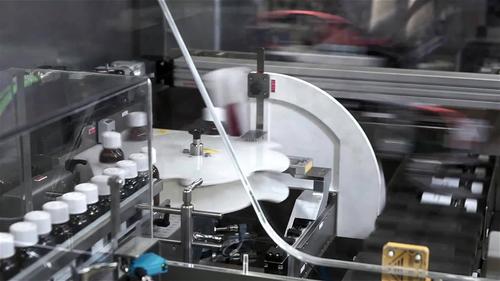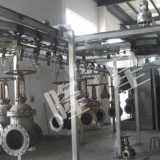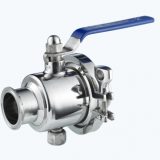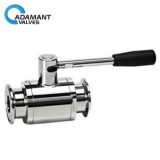In our daily life, we often deal with the ball valve, because it is essential to life, and we often see it. As the name implies, sanitary ball valves are better products in terms of hygiene. Sanitary ball valves are processed by high-grade polishing equipment. It can be said that they meet the requirements of surface precision. Therefore, sanitary ball valves have strong acid, alkali, and high-temperature resistance, which can be used in food processing and other industries with higher requirements.

Hygienic ball valves are specially designed for material transportation and flow control and are widely used in food, wine, dairy products, beverage processing, pharmaceutical, and chemical industries. Hygienic ball valves have a fully penetrated valve chamber design, without any fluid resistance, and are very suitable for handling the viscous or particulate matter in fluid transportation.
Hygienic ball valves are certified by hygienic standards and can provide material testing reports. Standard products can achieve the connection between imported domestic brand standard products, according to customer requirements device feedback signal, flow resistance is minimum so that the flow of fluid is maximum.
Because ball valves usually use rubber, nylon, and polytetrafluoroethylene (PTFE) as seating ring materials, their operating temperature is limited by seating ring materials. The cut-off effect of the ball valve is accomplished by the compression of metal spheres between plastic seats under the action of the medium. Under certain contact pressure, elastic-plastic deformation occurs in some parts of the seat seal ring. This deformation can compensate for the manufacturing accuracy and surface roughness of the sphere and ensure the sealing performance of the ball valve.
Because the seating ring of the 3 way ball valve is usually made of plastic, the fire resistance and fire resistance of the ball valve should be considered in the selection of the structure and performance of the ball valve, especially in the petroleum, chemical, and metallurgical sectors, the use of the ball valve in the equipment and pipeline systems of flammable and explosive media, and more attention should be paid to fire resistance and fire resistance.
For more information, please visit http://www.adamantvalves.com/



